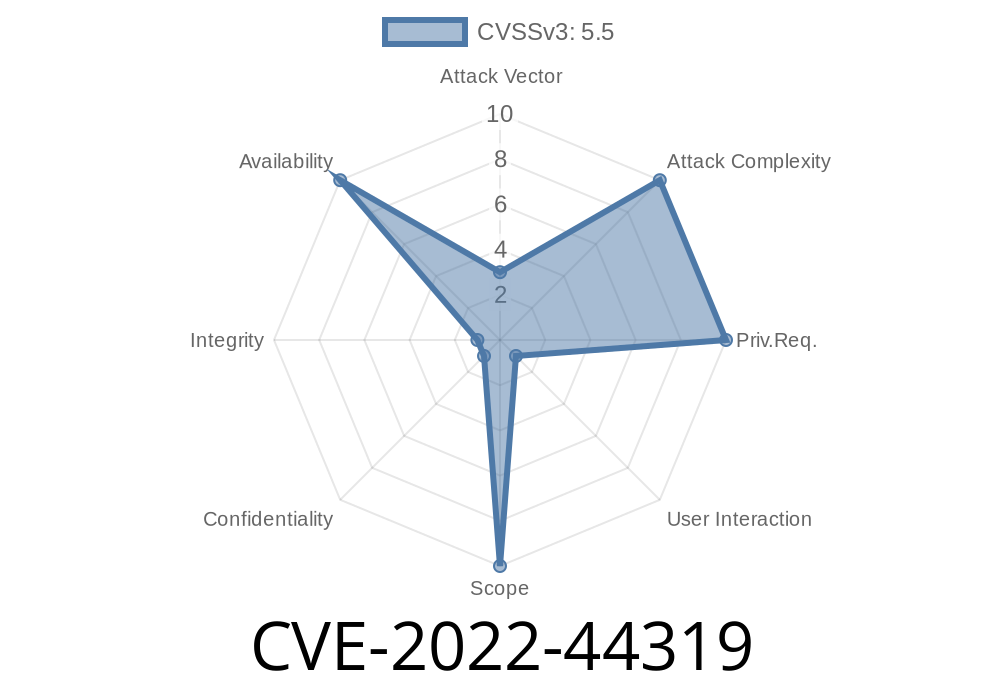The software world is never short of security vulnerabilities. Recently, PicoC Version 3.2.2, a popular lightweight C interpreter for embedded systems, was discovered to have a heap buffer overflow vulnerability. The issue, tracked as CVE-2022-44319, was found in the StdioBasePrintf() function within the cstdlib/string.c file when called from ExpressionParseFunctionCall(). In this post, we'll go over the details of this vulnerability, including code snippets, original references, and exploit details.
An Overview of the Vulnerability
The vulnerability in question is a heap buffer overflow, which occurs when a program writes data past the end of a buffer (a contiguous block of memory), potentially causing a crash, data corruption, or even allowing an attacker to execute arbitrary code remotely. Heap buffer overflows are especially dangerous in microcontroller environments since they may cause the entire system to fail or be hijacked by an attacker.
In PicoC version 3.2.2, the vulnerability lies in the StdioBasePrintf() function in the cstdlib/string.c file. The problem arises when the function is called from the ExpressionParseFunctionCall() function.
The problem exists in the StdioBasePrintf() function, specifically in this code snippet
struct ParseState Parser;
va_list Args;
struct Value *ReturnValue;
struct ValueType ReturnType;
char *FormatPtr;
// ...
ReturnType = ExpressionParseFunctionCall(&Parser, Function,ReturnValue, Args);
/* we cheat here and reference the stack from this position... don't stack any data too close to Args */
FormatPtr = (char *)Args[];
ReturnValue->Type = &Parser->pc->CharType;
LValueFromString(ReturnValue, FormatPtr);
With this code snippet, the FormatPtr variable is assumed to point to an appropriately formatted buffer, which would be safe to pass to the remainder of the StdioBasePrintf() function. However, there is not enough checking in place to ensure this buffer size is valid.
Exploit Details
First, let's understand how the vulnerability can be exploited. An attacker who can provide an excessively large buffer could surpass the internal limits of allocated memory, making it easier for them to gain control of the system. Let's consider a scenario where an attacker can provide a buffer to the function with a size larger than the available memory. The buffer will not fit in the allocated memory, and a heap buffer overflow will occur.
There are several ways an attacker could trigger the heap buffer overflow
1. If an attacker has control over the source code or can manipulate it in some way (e.g. modify the code on the fly), they can insert a crafted sprintf() function call to exceed the memory limit.
2. An attacker who can inject input to the system that will be parsed by PicoC can craft a malicious C file or script that calls functions in a way that triggers the heap buffer overflow.
Whatever the attack vector used, the successful exploitation of this vulnerability could result in denial of service, data corruption, or in some cases, remote code execution.
Here are the official references that detail the vulnerability
1. The public CVE record for CVE-2022-44319
2. NIST's National Vulnerability Database entry for CVE-2022-44319
Conclusion
CVE-2022-44319 is a dangerous heap buffer overflow vulnerability present in PicoC Version 3.2.2. It is essential for developers, users, and maintainers of PicoC to ensure the necessary patches are applied to their systems, and proper input validation and bounds checking are put into place to prevent exploitation of this vulnerability. Keeping software up-to-date and addressing security issues as they arise is a critical step in ensuring the safety and reliability of any embedded system.
Timeline
Published on: 11/08/2022 15:15:00 UTC
Last modified on: 11/08/2022 21:56:00 UTC
